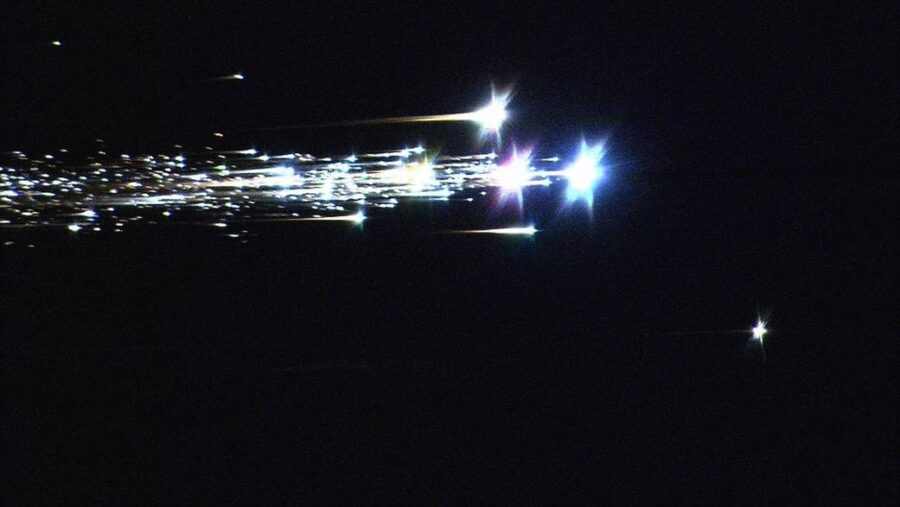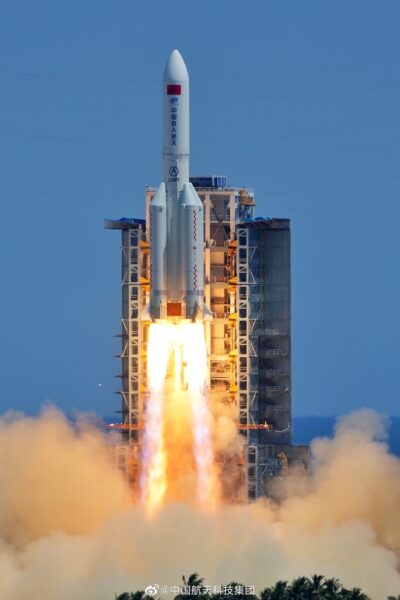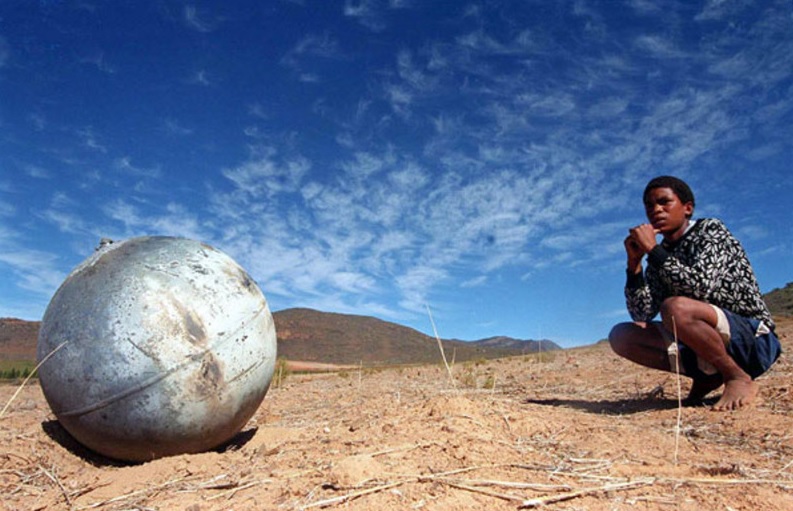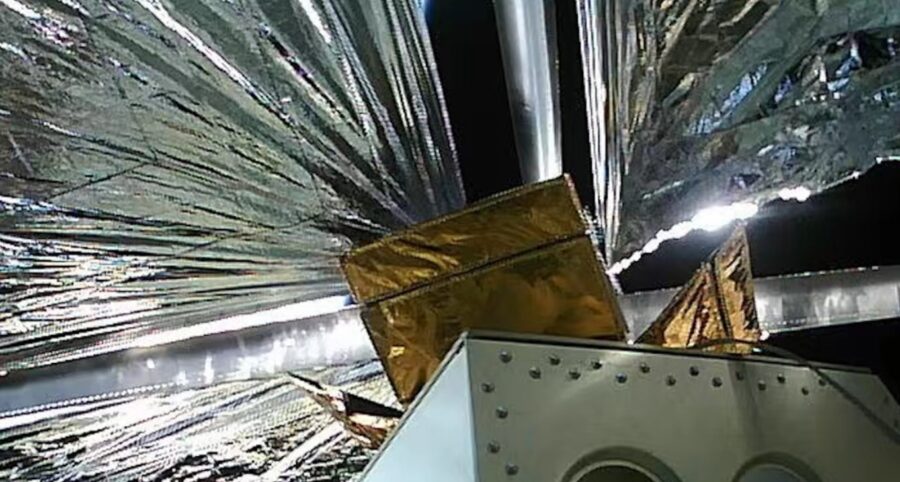A recent study examines the risk posed to human life by reentering space debris as the number of rocket launches continues to grow.

NASA / Ames / Jesse Carpenter / Greg Merkes
The number of space launches worldwide is growing: We’re on track for a record-setting year in 2022, with 104 launches thus far. But with more frequent launches comes the increased hazard posed by reentering space debris. A recent study finds that heavily populated areas of the Southern Hemisphere bearing a disproportionately high level of risk.
Uncontrolled Reentries
Recent high-profile reentries have highlighted the problem of uncontrolled reentries: In May 2021, China launched the core stage of their new Tiangong space station, raising international alarm in the spaceflight community when the 18-ton booster stage made an uncontrolled reentry over the Indian Ocean. Although no one was injured during the event, the booster did pass over several large Middle Eastern cities minutes before reentry.
Then, on July 31st, the 22-ton core stage of the Long March 5B booster, used to launch China's a new module for Tiangong, made headlines when it reentered over Borneo. These two events represent the biggest uncontrolled reentries since the demise of the Soviet Union’s Salyut 7 space station in 1991.

China National Space Administration
While China's reentries have made headlines, other nations also participate in uncontrolled reentries, including the U.S. Boosters from launches headed to the International Space Station, for example, come down uncontrolled. They’re much smaller, but hardware does occasionally survive all of the way down to Earth’s surface. In 2016, the second stage of a Falcon 9 was abandoned in orbit and reentered over Indonesia, with two refrigerator-size fuel tanks reaching the ground. And earlier this year, the trunk of a SpaceX Crew Dragon spacecraft turned up in Australia.
“The Long March 5B rocket used to construct the Tiangong space station leaves a particularly large rocket body in orbit, uncontrolled.” says study team member Ewan Wright (University of British Columbia). “But this is just the tip of the iceberg; rocket bodies reenter the atmosphere uncontrolled almost weekly (about 40 per year). Large satellites also pose a risk; they do not entirely burn up on reentry and sizable chunks can reach the ground.”

ESA
The rise of Starlink and other satellites used for internet connectivity has also increased overall reentry rates. These satellites are flying in low-Earth orbit, where they face drag from Earth's atmosphere, and they may fail for other reasons as well. About 9% of Starlinks launched so far have failed and reentered or will reenter; only some of these reentries are controlled.
Another risk is the increase in solar activity as Solar Cycle 25 ramps up, which makes Earth's atmosphere balloon outward, increasing the drag on low-Earth orbit satellites. (SpaceX lost an entire batch of Starlinks due to a solar storm.)
Risk to Human Life
A study out of the University of British Columbia, published July 11th in Nature Astronomy, finds that as the number of launches increases — and with them the uncontrolled reentries of rocket bodies, the risk of casualties is falling on the southern half of the globe.
Part of the problem is that there's no international agreement on what risk is acceptable. The U.S. Orbital Debris Mitigation Standard Practices policy requires launches to carry less than 1-in-10,000 risk to human life. However, NASA has waived this for specific launches over the years, including the 2015 launch of the Magnetospheric Multi-Scale spacecraft on an Atlas V, for which the risk of was calculated to be just 1-in-600.
“There's around a 1-in-10 chance that someone around the world will be harmed just by reentering rocket bodies over the next decade,” says Wright. “This is conservative; including satellite and other debris increases this risk estimate.”

Enver Esop / ESA
Equatorial — and non-space faring — nations share a disproportionately high threat from space debris, versus the countries that launch them, the study found. Currently, every active orbital launch site in the world is in the Northern Hemisphere except Mahia Launch Complex One in New Zealand, which hosts the startup company Rocket Lab.
Current space treaties offer few solutions to the problem. “At the moment, there is little international agreement on an acceptable level of risk from reentering space debris,” says Wright. “Space sustainability discussions at the UN and elsewhere should address this, eventually leading to a treaty. But this will take time.”
The 2010 United Nations Space Debris Mitigation Guidelines simply state that launches should not present “an undue risk to people or property.” The 2018 UN Guidelines for the Long-term Sustainability of Outer Space Activities goes a bit more in-depth, asking nations to address the risks posed by uncontrolled reentries, but doesn’t say how. The 1972 Liability Convention does state that “launching state(s) shall be absolutely liable to pay compensation for damage caused by its space object on the surface of the Earth or aircraft in flight." But thus far, this requirement hasn’t been put to the test.
“We need to enlarge the membership and role of the Inter Agency Debris Committee and persuade China to participate; then we can establish new norms,” says Jonathan McDowell (Center for Astrophysics, Harvard & Smithsonian). “We need to require active, controlled deorbit for all objects with a mass of more than some limit, probably two metric tons or so.”

ESA
Some proposals have suggested that de-orbit drag sails be added as standard equipment. A few CubeSat missions, including China's technology demonstrator that carried 925 square meter (269 square foot) sail, have already tested drag sail technology.

Shanghai Academy of Spaceflight Technology
Other means include retro-rockets, ground-based lasers, or cleanup missions, all of which could bring down satellites at the end of their operational careers. But these alternatives have yet to be tested.
 2
2









Comments
Steve Maran
September 8, 2022 at 3:41 pm
Is there a study of how many lives are saved as a result of the launch of satellites, for example due to the enabling of emergency communications, the forecasting of extreme weather events, the remote detection of lost ships or downed aircraft, or potentially, early warning of hostile ICBM launches?
You must be logged in to post a comment.
Alain Maury
September 9, 2022 at 5:56 pm
Is there a study of how many lives could be lost because of ICBM launches ? Till recently we were happily sleeping with the idea that nobody would ever start a nuclear launch. Today, I am not so sure anymore. What about treaties to abandon nuclear weapons, and replace satellite internet by a global, much more ecological, ground fiber optics network. Every satellite launched, be it for peaceful or military use is a lost of tons of valuable ressources, rare earth, etc...which are definitively lost to humanity since in the best cases it will burn into the atmosphere without killing anybody. The whole thing is a complete non sense and space should only be used for things which can only be done from space. Not letting any capitalist jerk dispose of our ressources (ours astronomers) to make a buck.
You must be logged in to post a comment.
You must be logged in to post a comment.